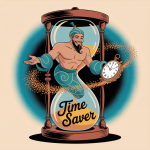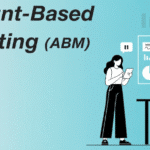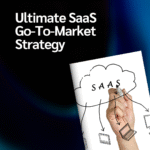The Definitive Guide for Saas Sales Automation
Sales automation has become a necessity for SaaS companies, instead of an optional efficiency booster. The most successful modern SaaS companies use sales automation. This helps them lower administrative tasks and boost sales team performance.
Sales teams that use automation for important tasks have noticed significant improvements. These tasks include lead nurturing, outreach, and follow-ups. As a result, they have experienced better productivity, higher conversion rates, and growth.
Sales reps do not waste time on administrative work and data entry. Instead, they focus on what they do best: building relationships, educating prospects, and selling.
This guide on SaaS sales automation covers what your team needs to know. It includes basic concepts and advanced tactics for getting started with automation. If you are a sales leader looking to improve your team, this is for you. If you are a RevOps manager exploring automation tools, there is also something here for you.
What is SaaS Sales Automation?
SaaS sales automation is the practice of using specialized software to optimize and scale the sales process for SaaS companies. Where traditional sales automation was primarily focused on contact management and basic task automation, modern SaaS sales automation incorporates AI to intelligently automate workflows, predict outcomes, and personalize content and cadence at scale.
The goal is to automate low-value, repetitive tasks and scale high-touch personalization to free up sales reps to do high-value work. Everything from scoring and qualifying leads, to email nurturing sequences, personalized content, proposal generation, and scheduling.
SaaS sales automation platforms have a special design and integrations. They are made to support the sales cycles, pricing models, and revenue processes of SaaS companies. These include:
- Cloud-native architecture
- API-first with built-in integration capabilities
- Dynamic sequence creation
- Automation triggered by events, behavioural signals, data patterns, etc
- AI-based personalization and predictive analytics
- Focus on scaling high-touch personalization
- Built-in connectors to subscription platforms, email marketing platforms, pricing and proposals
- Lead response and lead nurturing automation
- SaaS sales automation in action
SaaS sales automation mainly works by creating automated workflows. These workflows trigger a series of set actions based on certain events or conditions.
Data Sync: Everything starts with data synchronization. This involves syncing customer data and engagement metrics across your entire tech stack. The data updates customer information, engagement data, and sales metrics in real-time. This means each platform, like CRM, email, and subscription platforms, has the same information on every prospect.
Trigger-Based Workflows: The core of any automation system are the trigger-based workflows. These are automated workflows that start a series of actions when a certain condition is met. For example, this can happen when a prospect downloads a whitepaper or when a deal gets a specific tag.
AI-Powered Recommendations & Decisioning: The system makes recommendations and prioritizes actions for sales reps by analysing behavioural signals, using predictive analytics, and scoring leads and opportunities. The AI continuously learns from successful patterns to improve the automation over time.
Rule-Based Automation: Basic automated workflows to handle activities, sequence steps, and task prioritization based on pre-set rules.
Human-AI Collaboration: Automated systems work in tandem with your sales team. The AI provides recommendations, but the reps make the final decisions and take action.
Fully Intelligent, Personalized Automation: The most advanced automation systems use AI to create personalized engagement that intelligent algorithms drive and continuously optimize.
The benefits of Sales Automation
Implementing SaaS sales automation has far-reaching impact on your entire revenue process. Automation delivers significant productivity gains, and helps teams scale, improving productivity, growth, and success across several areas:
Sales teams are seeing a 20%-30% increase in time to sell. This is due to automating routine tasks. This automation lets reps focus on important activities. These activities include account planning, building relationships, and selling.
Revenue impact: Improved conversions and average deal sizes lead to dramatic revenue increases for sales teams. Automated lead scoring and prioritization help sales teams focus on the best opportunities. This way, they can guide prospects through the entire process.
Enhanced customer experience: Consistent, on-time, personalized engagement leads to a much better overall customer experience for prospects. Automated systems ensure consistent messaging, on-time follow-ups, and personalized engagement that appeals to specific decision-makers.
Data-driven insights: Automation provides clear visibility into performance, patterns, and pipeline health. This allows your team to spot and resolve bottlenecks, optimize messaging, and copy successful approaches to scale.
Scalability and consistency: SaaS sales automation can greatly boost your team’s capacity. It provides a more consistent customer experience for every prospect, no matter the team size or individual performance.
Automation opportunities
SaaS sales automation offers the opportunity to automate and optimize every stage of the SaaS sales process. Let’s look at some of the most common and high-impact opportunities:
Lead Generation: Intelligent lead identification, prospecting, and multi-channel engagement from website behaviour to email and social media outreach.
Lead Qualification and Scoring: AI models analyze data and score leads based on their chance to convert. They also match leads to the ideal customer profile.
Demo Scheduling & Trial Onboarding: Automate scheduling and onboarding of new trials, personalized for each prospect’s use case.
Proposal and Quote Automation: Create personalized proposals, quotes, and contracts quickly. This saves time and ensures a professional and consistent experience for every prospect.
Closing & Contract Management: Trigger closing sequences, contract generation and send, send reminders, and schedule decision-maker calls.
Customer Onboarding & Retention: Sequence-automation and personalization across all stages of the customer lifecycle.
Who uses SaaS Sales Automation
Sales automation is something that applies to every stage of the sales and revenue process. If you are still figuring out how to automate your sales team, think about your priorities. Look at the parts of your sales and revenue process that need the most help before you start.
How to implement Sales Automation
Automating your sales process can seem hard. However, if you break it into stages, you can make better choices. This will help you decide how to start and which tools to use.
- The sales automation implementation process
- Pick which stage of the sales funnel to automate first
- Select automation platform and tools
- Configure Automation
- Train your team on how to use your sales automation platform and processes.
- Measure performance and make adjustments
- For each automation you implement, track and measure results and make necessary adjustments to get the optimal configuration.
- Keep in mind that your automation needs will change over time. You should continue to look for additional opportunities and take an iterative approach to improving automation.
- 15 of the best sales automation tools for SaaS companies in 2025
RevGeni.ai
RevGeni.ai is a new AI automation platform for B2B sales teams. It offers ready-to-use AI agents called “Genies.” These Genies automate various sales tasks. They help with lead research, prospecting, email follow-ups, meeting preparation, and content and proposal generation.
Key Features
- Lead Genie — Lead Research and Scoring: Automatically researches new leads, updates scores, and enriches companies with additional data points
- Prep Genie — Meeting Preparation: Helps sales reps get ready for meetings. It researches prospects and gathers data from CRM. This ensures reps have the information they need for successful sales meetings.
- Follow-Up Genie — Email Sequencing: It automatically sends personalized email sequences after meetings. It has templates for each stage of the deal, follow-ups, and more.
- Proposal Genie — Document Generation: Automatically generates fully personalized proposals, quotes, and contract documents
- Best For: SaaS companies looking for a no-code, ready-to-use sales automation platform without the complexity and expense of a traditional sales automation platform.
Salesforce Sales Cloud
Salesforce is an industry-leading CRM platform that includes robust sales automation and AI-powered analytics through their Einstein AI. Salesforce excels at large deployments, complex sales processes, and scale. Ideal for enterprise organizations with established, formalized sales processes.
Key Features
- Opportunity Management and Scoring
- Lead Scoring and Identification
- Automated Email Sequences
- Territory Management and Routing
- Activity-based Dashboards and Reporting
- Extensive AppExchange Marketplace with integrations for every major tool
- Best For: Enterprise businesses with complex sales processes, multiple products and long sales cycles
HubSpot Sales Hub
HubSpot offers a no-code CRM and sales automation platform that is particularly effective if your company leverages content marketing and lead nurturing strategies as part of the sales process. HubSpot is one of the strongest inbound sales automation platforms.
Key Features
- Email Sequences and Follow-up Automation
- Meeting Scheduling Automation
- Deal Tracking, Sales Analytics, and Sales Pipeline Management
- Seamless integration with HubSpot Marketing and Service platforms.
- Free Tier for up to 20 employees
- Best For: Growing companies that need an all-in-one marketing and sales automation solution, particularly for companies with well-established inbound marketing strategies and lead generation.
Outreach
Outreach provides sophisticated multi-channel cadence-building capabilities to automate sales outreach and engagement sequences. Ideal for sales development and sales enablement teams that need powerful sequence automation with detailed performance reporting.
Key Features
- Advanced Sequence Builder with Email and Phone Sequences
- A/B Testing of Sequences, Templates, and Timing
- Conversation Intelligence, Performance Analytics
- Detailed Performance Reporting
- Easy Integrations with most major CRM platforms and tools
- Best For: Sales development teams and lead response automation for prospecting, or for anyone who needs sophisticated sequence building with detailed reporting
SalesLoft
SalesLoft is a platform for cadence-based sales engagement with integrated sales coaching and performance management capabilities. Combines automation and intelligent human coaching for better sales team performance.
Key Features
- Cadence Builder with Email Automation and Sequences
- Calling Features and Sales Coaching with Conversation Recording
- Team Coaching Dashboards and Performance Metrics
- Analytics and Performance Reporting
- Best For: Sales organizations that prioritize human sales coaching in addition to automation, particularly those with established sales development teams.
Gong.io
Gong uses conversation intelligence and revenue analytics to deliver insights on sales calls, emails, and meetings. Gong AI analyses sales conversations to identify patterns in winning deals and provides data-driven coaching and recommendations to help reps do the right things at the right time.
Key Features
- Call Recording and Transcription
- Deal Risk Scoring and Alerts
- Competitive Intelligence
- AI-Driven Coaching Insights
- Sales Intelligence with automated prospect insights
- CRM Integrations to provide insights in-line with existing workflows
- Best For: Sales teams who make a lot of discovery calls and demos and want to use data to improve their conversation quality and advance more deals
ZoomInfo
ZoomInfo combines a sales database with a sales intelligence and automation platform. Their primary focus is on prospect research, intent monitoring, email finding, and automated email sequences.
Key Features
- ZoomInfo Contact and Company Database
- Intent Data and Updates
- Email Finder
- Sequence Builder and Automation
- Advanced Filtering and Search to target specific types of companies
- Best For: Sales teams focused on lead generation and prospecting, particularly those who target a specific industry, company size, or profile.
Clari
Clari is an AI-powered platform that specializes in revenue operations including sales forecasting and pipeline management. Leverages AI to analyse sales deal data to identify patterns that impact success, and deliver predictive forecasts and actionable insights to manage and optimize pipeline.
Key Features
- Sales Intelligence and Forecasting
- Pipeline Management
- Predictive Lead Scoring
- Deal Insights, AI-Based Recommendations, and Automation
- Full Visibility and Control into Pipeline Health and Accuracy
- Best For: Sales forecasting, pipeline management, and opportunity evaluation.
- There are many other great sales automation tools and platforms. For a full overview of all the options check out our in-depth sales automation tools and platforms article here.
How to choose the right SaaS sales automation platform
Goals & KPIs
Start with clear goals for your automation and identify key metrics that will measure success. Common goals are reducing manual work, improving lead response time, increasing conversion rates, and better forecast accuracy.
Identify current performance baselines for key metrics such as admin time per lead, lead response time, conversion rate by source, and sales cycle length. This baseline will provide data points against which to measure automation impact.
Align automation goals with both short-term productivity and long-term strategic goals. Automation can have immediate benefits in reducing toil but the best platforms also enable scaling, data-driven decisions, and continuous process improvements.
Platform Features
Evaluate platforms based on key features that meet your specific use cases and workflows. Focus on platforms that solve your highest-impact pain points rather than chasing complete functionality suites.
Integration ease is often more important than feature lists. Evaluate integration capabilities with existing CRM, marketing automation, customer success, and analytics platforms.
Consider the learning curve and adoption friction. An excellent but hard-to-use platform is worse than no platform at all. The more friction the more users that will not use the platform.
Scalability and Pricing
Examine how pricing models align with growth projections and budget constraints. Some charge per user, others per feature, some are usage-based.
Consider scalability in features and budget. Ensure your chosen platform can scale with team growth, increasing complexity, and use cases.
Estimate total cost of ownership including implementation, training, ongoing management, and any customization costs. Initial investment sometimes pays off over time.
Pilot and Measure
Run automation pilots before full implementation to validate assumptions, learn, and optimize based on initial use cases. Full-scale rollouts have higher risks than pilot-first approaches.
Create measurement protocols to track the impact of automation on KPIs like productivity, conversion rates, NPS, and revenue outcomes. This should be an ongoing analysis process not a one-time setup.
Expect to iterate on automation set up. Success is not about a perfect first build but the ability to improve based on user feedback and performance data.





